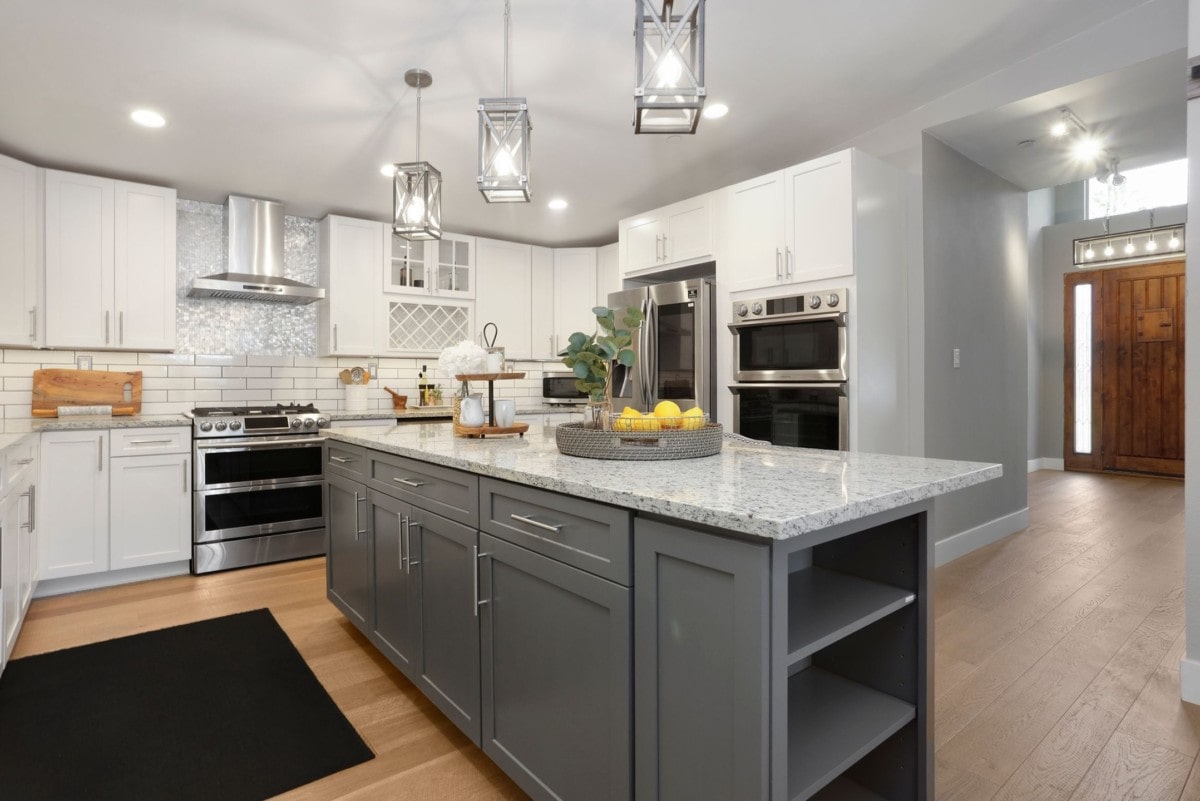What Do Home Appraisers Look for In a House to Determine Its Value?
You found the house, and you and the seller have agreed on a sale price. Congratulations. Now it’s full steam ahead to closing, right? Not so fast. Some very important steps to the home buying process are just ahead, and one of those is the home appraisal. Read on to learn exactly what home appraisers look for in determining the value of a house.
What are home appraisals used for?
The purpose of the appraisal is to provide a fair and unbiased market value of the home. It’s an essential part of your loan package, and lenders won’t provide financing for the property without one. The house is collateral for your loan, so unless you’re paying cash for the property, you’ll need an appraisal.
The home appraisal provides the lender, and you, with verification that the agreed-upon sale price isn’t too high. If the appraised value is higher than your agreed-upon sale price, that’s okay because that just means the home is worth more than what you’re paying for it – instant equity.. It’s another story if the appraised value comes in lower than the sale price, and we’ll cover that a little later.
What home appraisers look for inside the house
Home appraisers provide a thorough evaluation of all aspects of a property they are appraising. And while there are many components to the home appraisal process, the outside of the house and what appraisers look for in the interior of the house, are big ones.
When looking at the interior of your prospective home, the appraiser will consider the overall design and condition of the home, making sure there are no health or safety code violations or any signs of pests like termites or rodents. They’ll also be making notes of any deferred maintenance or water damage they find. Appraisers sometimes place repair requirements on the appraisal depending on what they find. If there are any appraisal requirements, these are required to be completed before closing on the house.
The appraiser will also be looking to see if the interior of the property has a dated appearance since this will have an impact on the home’s value. A dated appearance can include outdated light fixtures, faucets, and kitchen appliances.
They will look to see if there are fireplaces in the home and whether any improvements or upgrades have been made in the house and their overall quality. Things like insulated windows, central A/C, and a security system will be noted as well.
Do Appraisers Look in Closets?
Appraisers do look in closets to determine the total square footage of the property. This doesn’t mean every single inch of your house has to be in tip-top shape for the appraisal, but the interior of the home should be clean and free of clutter, and this includes closets, under sinks, and in the attic. This will make the appraiser’s job that much easier.
What home appraisers look for outside the house
On the exterior of the house, careful consideration will be given to the roof and foundation. In evaluating the roof, the appraiser will be looking for any missing shingles or other visible defects. Damage to the roof can allow water to leak into the interior and cause problems like the infestation of bugs or small animals.
When assessing the foundation, an appraiser will look for vertical or horizontal cracks, crumbling of the foundation, or any signs of water leakage. While outside, the appraiser will evaluate the chimney to see if it is cracked or shifted from its original placement.
Important aspects the appraiser will review when determining property value include the porch, deck, siding, garage, as well as the size of the lot and location of your property.
What else do appraisers look for when assessing a home’s value?
Other things appraisers look for when assessing a home’s value are “luxury” items. Examples are an outdoor or indoor swimming pool, gourmet kitchen with warming drawers, theatre rooms, outdoor kitchens, and spa bathrooms.
What home appraisers do not look for
Appraisers don’t look at your choice of home décor or items like window curtains and blinds that can be taken down and removed from the home, as they are not considered real property.
They will also overlook any “lived-in look” your home may have. They are trained to look past the evidence that a person, or family, resides in the house. None of that will factor into the value ascribed to the house when it is being appraised.
However, a “lived-in look” doesn’t mean kitchen cabinets that are missing doorknobs or bathtubs whose faucets continually drip water. Those are examples of deferred maintenance, and they will be considered when the appraiser is formulating the value of the property.
How does the appraiser determine the value of a house?
Once the appraiser has made a physical inspection of the property, they’ll gather information on “comps,” or comparable home sales located as close to the subject property as possible.
For example, the appraiser would not use three or four single-story ranch-style homes in Charlotte, NC, as comps for a two-story property in Denver, CO. Instead, they’ll try to locate other ranch-style homes to use as a comparison to the house being appraised.
Not only do the comps need to be similar in style to the house being appraised, but they also must have sold recently, typically within the past six months, and be located close to the subject property. Using real estate comps that are similar to your property and which have sold recently in your area helps the appraiser approximate the fair market value of your home.
However, there are times when appraisers are not always able to find three or four comparable homes that are exactly like the house being appraised. When that happens, the appraiser will make adjustments for differences in the features and characteristics between the subject property and the comps chosen to determine a home’s value. Things like where the house is located, its overall condition, how old it is, and what amenities it has are all things appraisers consider when comparing the property to the comps.
For example, let’s say your home has three bedrooms and two full baths, but one of the comps has four bedrooms and two full baths. Although this home could still be used as a “comparable” property, the appraiser would need to make an adjustment due to the comp having an extra bedroom.
The appraiser then combines all of what they have learned about the subject property from their physical evaluation with what they learn about the comps to arrive at the fair market value, or appraised value, of the property.
How to get your home ready for an appraisal – checklist
There are many things you can do to get your home ready for a visit from the appraiser. When you’re on the selling side of the appraisal, a checklist comes in handy to make sure you don’t forget anything.
- Make a list of any improvements you’ve made to your home and give it to the appraiser. Maybe you’ve added a bathroom or finished off the basement. Put those on the list. Have you installed new siding or replaced the roof? Those go on the list too. There are certain home improvements that can add value to a home, and you want the appraiser to know about all of them.
- Have your real estate agent make a list of suitable comps for your home to give to the appraiser. Your realtor sees many houses, and they have probably seen properties in your area that would make good comps. This can be helpful for the appraiser when they go to write up the report.
- Make sure all areas of the house are easily accessible. This includes the crawl space, basement, and attic, as well as all rooms and closets.
- Deep clean. You want to put your best foot forward ahead of an appraiser’s visit, so be sure to clear away any clutter and clean the hard-to-reach spots to showcase your home in the best light. When beginning to clean any room, try decluttering first. Go from room to room while sorting items into three stacks: one to give away, one to keep, and a third to throw away. Place the items you decide to keep where they belong, so they’re not adding to the clutter. Remember, having your home in great shape can go a long way in ensuring the appraiser walks away with a positive impression.
- Tidy up the outside, front, and back of your house. You don’t need to have your Master Gardener certificate to get your yard looking good. Trimming shrubs and bushes, cleaning up leaf litter, and adding color to the front porch area with plantings are especially helpful for curb appeal. Other budget-friendly curb appeal ideas you might incorporate into your prep work might be to go over the front door with a fresh coat of paint or add outdoor lighting on the patio.
- Make any minor repairs you can. Remember that loose kitchen cabinet doorknob? Or the leaky faucet in the bathroom? Grab your screwdriver and wrench and fix those items. Just a little bit of elbow grease on your part could impact the appraised value of the property.
What happens if your house gets a low appraisal?
Your lender just called, and the appraisal is in. The house appraised $1,000 higher than the sale price you agreed to. That’s great news, and chances are the seller is fine with that. But what happens if the appraisal comes in lower than the agreed-to sale price? There are several things that can happen in this case.
Let’s say you and the seller agreed to a sale price of $250,000, but the appraisal comes in at $230,000, that’s a $20,000 difference and your lender won’t be the one making up that difference.
One way to protect yourself against this is to write an appraisal contingency clause into the sales contract when you write up the initial offer. This clause gives the buyer the right to walk away from the deal and have their earnest money returned if the house appraisal comes in low.
If you didn’t have an appraisal contingency clause attached to the sales contract, there are still ways to make the deal work. One way would be for you to pay the $20,000 difference in cash. Another way would be for you to ask the seller to lower the sale price by $20,000. You could also offer to split the difference between the two of you in whatever way is agreeable to both parties.
Yet another option would be to challenge the appraisal and try to get the appraiser to modify their opinion about the market value of the home. You can also ask to be let out of the contract, but without an appraisal contingency clause, you may forfeit your earnest money if you do.
Key takeaways
There are many elements appraisers consider when determining the value of a house, and understanding the home appraisal process is an important aspect of a successful home sale. There are also many items that can be done to prepare for the appraisal, whether you’re buying or selling, that can make the process go as smoothly as possible. However, if you happen to hit a snag along the way, your real estate agent can answer any questions you have and help you successfully maneuver through the home buying or selling process.
The post What Do Home Appraisers Look for In a House to Determine Its Value? appeared first on Redfin | Real Estate Tips for Home Buying, Selling & More.





